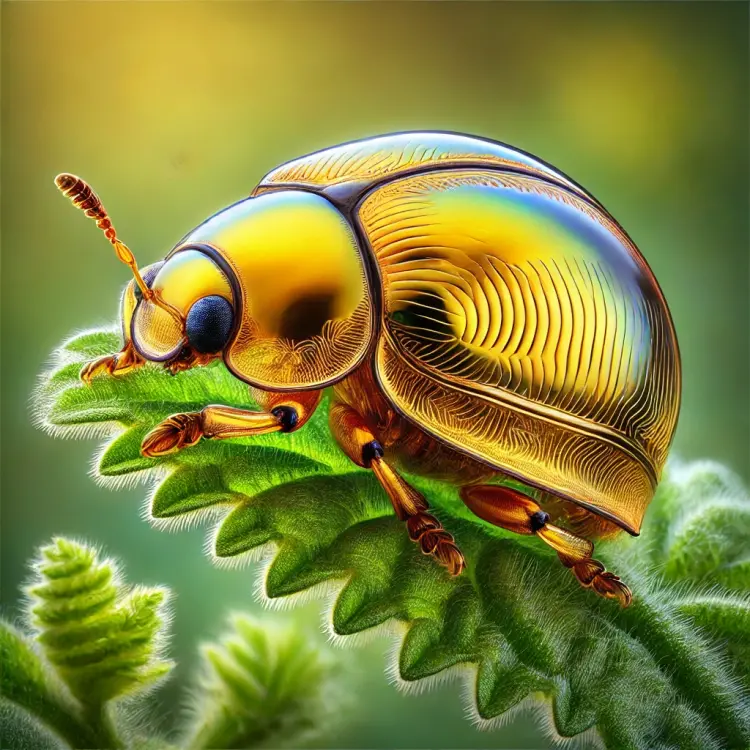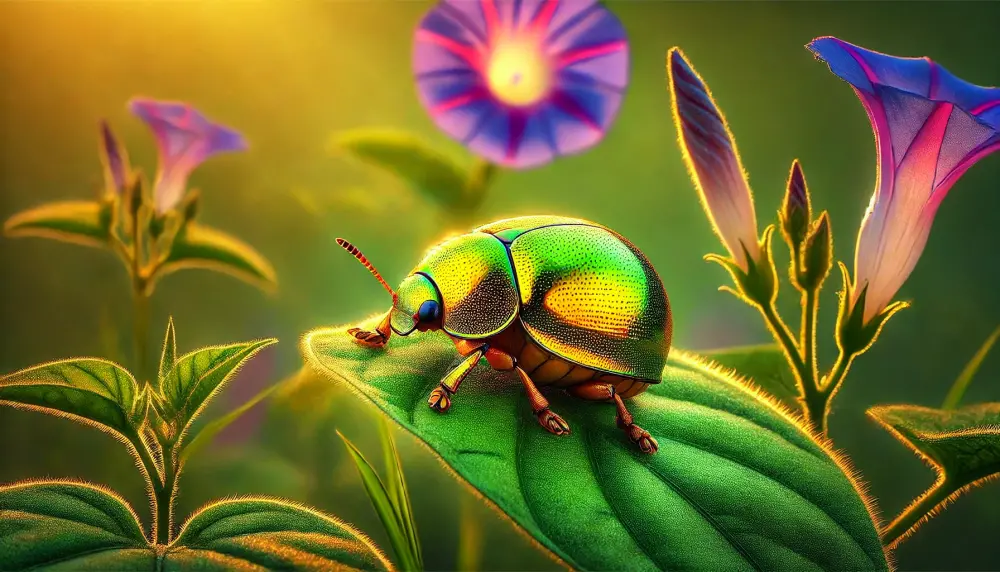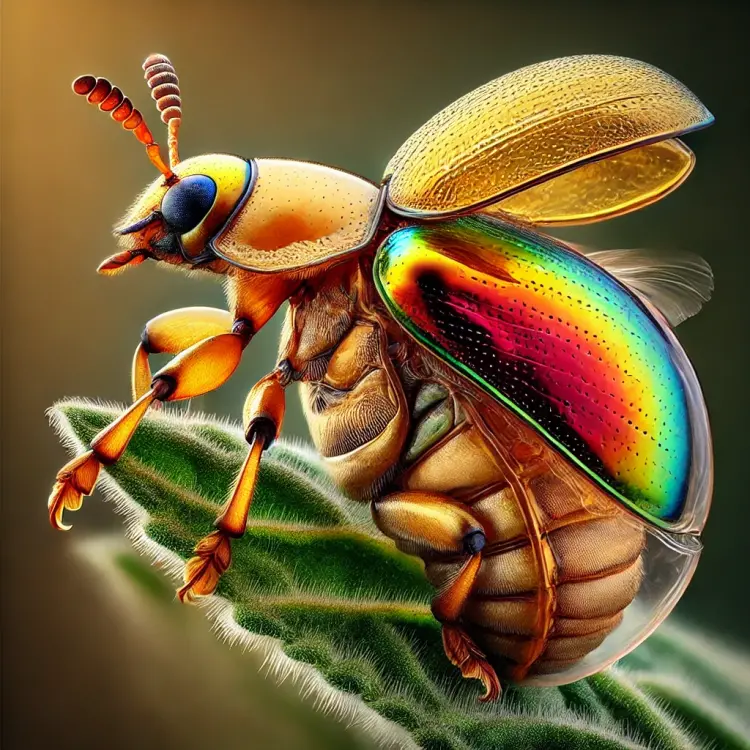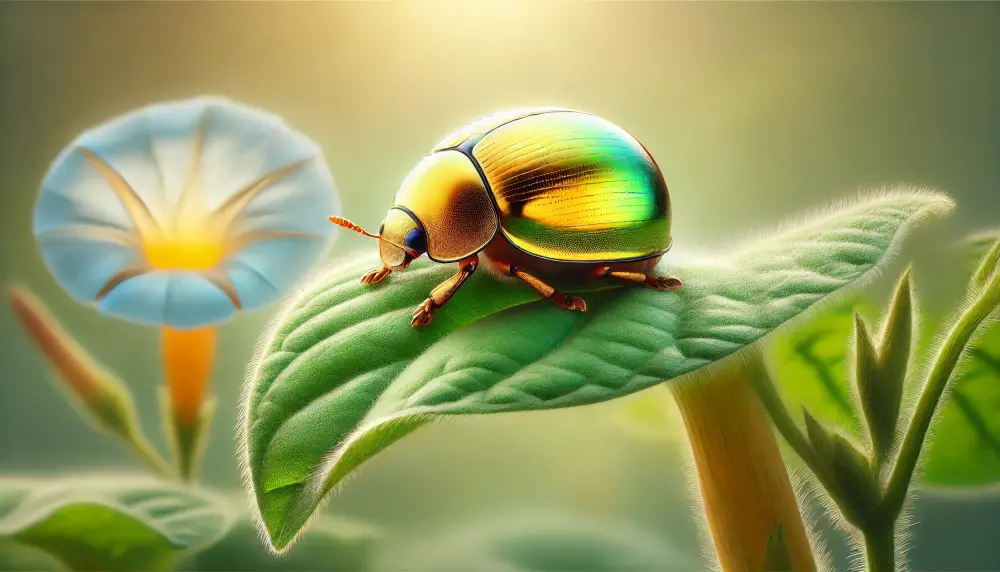The insect world is full of fascinating creatures, and among them, the golden
tortoise beetle (Charidotella sexpunctata) stands out as one of the most
visually striking. With its ability to change color and its distinctive,
metallic gold appearance, this tiny beetle has intrigued scientists and
nature lovers alike.
The golden tortoise beetle earns its name from its dome-shaped, tortoise-like
shell that gleams with an iridescent golden hue. This stunning appearance is
due to a layer of liquid beneath its transparent shell, which reflects light
in a way that creates a metallic effect. However, this beetle isn’t always
gold—it can shift to a reddish-brown color when stressed or disturbed. This
color change occurs as a result of changes in moisture levels beneath its
shell, providing a natural camouflage mechanism. [1]
Habitat and Distribution
Native to North and South America, the golden tortoise beetle is commonly
found in gardens, meadows, and areas abundant in its host plants, such as
morning glories and sweet potatoes. [2] These beetles prefer warm, humid
environments where they can thrive among the leaves of their favorite plants.
Life Cycle and Behavior
Like many other beetles, the golden tortoise beetle undergoes complete
metamorphosis, progressing through four life stages: egg, larva, pupa, and
adult. The larvae are particularly interesting, as they carry their shed
skins and feces on their backs as a form of protection against predators—a
behavior known as fecal shielding. [3]
The adult beetles feed on the foliage of plants, occasionally causing minor
damage to leaves. However, they are not typically considered major
agricultural pests. Their ability to rapidly change color and their
relatively low impact on crops make them a curiosity rather than a concern
for most gardeners. [4]
The Science Behind the Shine
The beetle’s golden coloration is a result of microscopic structures in its
exoskeleton that reflect light. These structures interact with liquid layers
beneath the shell to create the metallic sheen. [5] When the beetle is
threatened or disturbed, it withdraws the liquid, causing the exoskeleton to
appear more transparent or reddish-brown. Scientists study this phenomenon to
understand how light manipulation can be applied in material science,
potentially inspiring new developments in color-changing technology. [6]
A Tiny Marvel of Nature
The golden tortoise beetle is a perfect example of nature’s brilliance,
blending beauty with remarkable survival adaptations. Whether shimmering in
gold or hiding in plain sight with its color-changing ability, this beetle is
a fascinating species that continues to capture the curiosity of
entomologists and nature enthusiasts alike. [4]
Next time you spot a glimmering gold beetle on a leaf, take a closer look—it
might just be one of nature’s tiniest treasures!
Praise to Jehovah
Indeed, the golden tortoise beetle is another testament to the wondrous works
of Jehovah. The intricate design and unique adaptations of this tiny creature
reflect the incredible wisdom and creativity of our Creator. Just as Jehovah
provides for even the smallest of His creations, so too does He guide and
care for all who seek Him.
Sources
[1] Online Kids Discover, February 1, 2014
[2] Missouri Department of Conservation
[3] Wikipedia, Fecal Shield
[4] University of Florida IFAS Extension, October 1997 (revised November
2012)
[5] Chaboo, C. S., et al., ZooKeys, 1177, 87–146, 2023
[6] Vigneron, J. P., et al., Physical Review E, 76(3), 031907, 2007




0 Comments
Recommended Comments
There are no comments to display.
Join the conversation with your brothers and sisters!
You are posting as a guest. If you are already a member, sign in now to post with your existing account.
Note: Your post will require moderator approval before it will be visible.